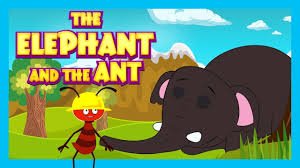The fable of The Elephant and the Ants is one of those timeless stories that has been passed down through generations in various cultures, though its exact origins remain shrouded in the mists of oral tradition. While many assume it comes from Aesop’s collection, this particular tale actually has stronger roots in Indian and African folklore, where elephants and ants play significant symbolic roles in local wisdom traditions. What makes this story particularly fascinating is how it inverts the usual power dynamics we expect in nature – instead of the mighty elephant dominating the tiny ants, we see how collective action and strategic thinking can overcome even the most formidable opponents. The earliest written versions appear in the Panchatantra, an ancient Indian collection of animal fables dating back to 300 BCE, where it served as a political lesson about how united subjects could resist tyrannical rulers. In African variations, particularly among the Ashanti people of Ghana, the story takes on additional layers of meaning, often being used to teach children about community values and respect for all creatures, no matter how small they might appear.
At the heart of the story are two seemingly mismatched characters: the elephant, representing brute strength and arrogance, and the ants, embodying patience, cooperation and cleverness. The elephant is typically portrayed not just as large but as deliberately destructive, stomping through the forest without regard for smaller creatures, uprooting trees, and muddying watering holes that other animals depend on. This makes his comeuppance particularly satisfying when the ants, tired of his bullying ways, devise a plan to teach him a lesson. What most versions don’t mention is how this character dynamic reflects ancient observations of actual animal behavior – certain ant species in Africa and Asia are known to aggressively defend their territories against elephants by swarming into their trunks, a real-life phenomenon that likely inspired the tale. The ants in the story aren’t just generic insects but are often specifically described as army ants or weaver ants in traditional tellings, species known for their collective behavior and defensive capabilities.
The pivotal moment in the story comes when the ants decide they’ve had enough of the elephant’s tyranny. In most versions, they don’t confront him directly at first but instead observe his habits and routines, learning when he sleeps, where he drinks, and what paths he regularly takes through the forest. This strategic patience is a crucial but often overlooked aspect of the tale – the ants don’t win through sheer numbers alone but through careful planning and timing. When they finally execute their plan, different cultural versions offer varying methods: some tell of ants swarming up the elephant’s trunk to drive him mad with pain, others describe them building bridges of their bodies to lead the elephant into a pit, while Southeast Asian variants often include the ants tricking the elephant into attacking a wasp nest. The common thread is that the elephant, for all his size and strength, is ultimately humbled by creatures he considered beneath his notice.
What gives this fable its enduring power are the multiple layers of meaning it carries. On one level, it’s a simple story about how the weak can overcome the strong through unity and cleverness. But dig deeper and we find commentary on social hierarchy, environmental balance, and even military strategy – many historians believe versions of this tale were used by resistance movements in colonized regions as allegories for how local populations could resist much larger invading forces. The ecological message is particularly striking when we consider how traditional societies understood the interconnectedness of all creatures long before modern environmentalism. The elephant’s initial disregard for the ants mirrors humanity’s often destructive relationship with nature, while the ants’ victory serves as a warning about underestimating the power of small, persistent forces.
Modern psychology has found interesting parallels between this ancient tale and contemporary understanding of collective intelligence. The ants’ behavior in the story mirrors what scientists now call “swarm intelligence,” where simple creatures following basic rules can solve complex problems as a group. This makes the fable surprisingly relevant in our age of distributed networks and crowd-sourced solutions. The story also offers profound lessons about bullying and conflict resolution that remain valuable for children today – it models non-violent resistance, strategic thinking, and the power of community action against larger oppressors. Interestingly, the ending varies significantly across cultures: some versions have the elephant learning humility and becoming protector of the forest, while others show him fleeing never to return, allowing different interpretations about whether true change is possible for those who abuse their power.
The story’s legacy continues in surprising ways. It inspired the “ants and elephants” metaphor in economics to describe small businesses competing with corporate giants, appears in management textbooks as a lesson about organizational behavior, and even influenced military theorists studying asymmetric warfare. Contemporary children’s books often sanitize the tale, removing the more violent elements of the original, but in doing so sometimes lose the edge that made it so compelling – that justice sometimes requires confrontation and that power imbalances can be overturned. At its core, The Elephant and the Ants remains one of our most potent stories about the paradox of strength, reminding us that true power comes not from size alone but from wisdom, cooperation, and sometimes, knowing exactly where to bite.
Go to main page


